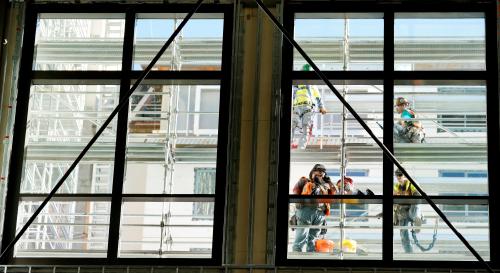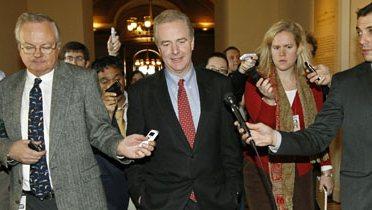Donald Trump was elected President of the United States with the enthusiastic backing of white American workers without college degrees, at least partly because he promised to restore the good-paying jobs they’ve lost in the past few decades.
But can he actually accomplish this? What will a Trump presidency really mean for US workers?
At the moment, we have no way to know for sure, because it is unclear what policies he intends to pursue, and whether Congress will pass any legislation he proposes. During the campaign, Trump flip-flopped quite dramatically on labor issues. For instance, at one point he claimed the wages of American workers are already too high for our companies to be competitive; but later he appeared more open to possible federal minimum wage increases and paid parental leave.
Here are five issues where Trump will make important decisions that affect American workers, and what the effects of these decisions might be.
- Tax Cuts
It is almost a certainty that President Trump will quickly propose large tax cuts for individuals and corporations in 2017, and that the Republican Congress will pass some version of this – since the tax cuts can be folded into a budget reconciliation bill that cannot be filibustered by Senate Democrats.
There will likely be some effort to pay for the tax cuts with spending cuts, particularly in “safety net” programs for the poor like food stamps (now called Supplemental Nutrition Assistance Programs, or SNAP) or Medicaid – of which Republicans are very critical. One net effect of these tax and spending cuts will be to increase after-tax inequality in America.
But it is also almost inevitable that the tax cuts will be larger than those in spending and that federal budget deficits will rise substantially. In the short term, this will probably have positive effects for most US workers – economic growth and employment will rise, and tighter labor markets will generate higher wage increases.
On the other hand, with labor markets already tightening and the unemployment rate now well below 5 percent, the upside for fiscal stimulus without generating inflation is limited. Real interest rates will almost certainly rise faster than otherwise, both because of bond market reactions to rising expected deficits and the efforts of the Federal Reserve Bank to offset expansionary fiscal policy with some monetary contraction. Any benefits to workers from these tighter labor markets will mostly be temporary.
Repeal of (and Replacing) Obamacare
There is also little doubt that the Republican Congress will move swiftly to repeal the key features of the Affordable Care Act (ACA or “Obamacare”). While a complete repeal would require broader legislation that could be filibustered in the Senate, many of the program’s primary features – such as its subsidies for lower-income insurance purchasers and penalties on employers or individuals who fail to provide or purchase it – can also be repealed in a budget reconciliation bill.
Of course, the loss of access to subsidized insurance would be very harmful to lower-wage and/or unemployed workers and their families who now depend on it. And some features of the law – particularly the prohibition against insurance companies denying coverage for those with pre-existing conditions – are widely popular. President Trump and Congressional Republicans will have little desire to repeal such popular measures or be viewed as causing loss of health insurance to millions of workers.
Consequently, an effort to “repeal and replace” Obamacare will, at the outset, become a “repeal and delay” effort, while the President and Congress consider what its replacement should be a few years down the road. The well-known dilemma of how to require insurance companies to cover people with preexisting conditions while keeping the companies solvent through enrollment of healthier people will remain. And whether the beneficial aspects of Obamacare for workers can survive while the entire program is in limbo – or, alternatively whether insurance companies start fleeing the state insurance exchanges as they expect future enrollments to shrink – remains to be seen.
Infrastructure
The one place where there seems to be broad agreement between President-elect Trump and Congressional Democrats is on the need to generate more spending on infrastructure. Such spending can have quite positive effects on US workers – by creating more well-paying construction jobs over the next several years while raising US productivity, and therefore worker wages, in the long run as well.
But much uncertainty remains over exactly how much new infrastructure spending will be generated. It seems very unlikely that Congressional Republicans will dramatically increase federal spending on infrastructure, since such spending would either require new taxes or generate even larger budget deficits. For his part, Trump did not actually propose new federal spending on infrastructure during the campaign, but instead argued for large tax credits for private contractors that engage in infrastructure projects.
In this case, the new projects would mostly need to be financed at the state level, as they traditionally have been, through some combination of state taxes and borrowing plus private contributions (from highway tolls, for example). But such projects have also been declining over time, as state budgets have become more constrained (primarily by rising payments for Medicaid). Whether tax credits for contractors will generate much new spending here, as opposed to just windfalls for their participation in infrastructure projects that would occur anyway, remains an open question.
Trade and Immigration
During the campaign, Trump’s attacks on our international trading partners – like China and Mexico – and on undocumented immigrants in the US were extremely popular with working-class voters, especially among whites. But what will President Trump actually do on these issues?
Trump’s promise to renegotiate trade agreements like the North American Free Trade Act (NAFTA) seem unlikely, as Republican congressional leaders (as well as Mexico and Canada) will mostly oppose this. In specific circumstances, President Trump could unilaterally impose tariffs on China and other countries, perhaps generating some new American jobs in manufacturing in the process.
But the positive effects of such actions on American workers will, at best, be very limited. American workers would not be happy to see the consumer prices they pay on goods from China begin rising as trade declines. But that would likely not happen; instead, a tariff on China would probably generate more imports from other countries, like Vietnam, which could step in and fill the product market void created by the tariff more cheaply than American companies.
nbsp;
Indeed, these companies, which have mostly abandoned low-tech operations manned by unskilled workers in the US in favor of highly mechanized “advanced manufacturing” requiring many fewer and more highly skilled technical workers, would not now shift back towards a mode of production in which they have no “comparative advantage” over time. If anything, they and their workers would be hurt if the flow of parts they import from China is disrupted or becomes more expensive.
If China retaliates against our tariffs by imposing retaliatory duties on our products, American workers in manufacturing and other industries who benefit from exports would be hurt as well. Ironically, workers in such industries earn significantly higher wages than in those which tend to compete with imports. The likely net effects of comparable declines in our imports and exports would thus be lower wages for US workers.
Would Trump be more successful by incentivizing or pressuring American companies to keep production jobs here rather than moving them overseas? With great fanfare, a combination of public pressure and public subsidies recently induced Carrier to keep approximately 800 jobs in Indiana, at a cost of over $8000 each. Given the loss of about 5 million manufacturing jobs in the US since 2000, the Carrier episode seems more like a meaningless publicity stunt rather than the beginnings of a real policy.
We will likely see many such stunts over time that add up to relatively little. And, if Trump wants a more serious policy effort along these lines, he would have to think more systematically about what kinds of companies merit this kind of intervention and under what circumstances. The economic benefits of keeping less efficient production operations in the US over time, especially if implemented in a haphazard way, are not very clear.
And what about immigration? The costs and benefits to American workers of immigration are much more mixed than Trump has acknowledged. While some native-born American workers face job competition and lower wages, the benefits of immigration to American include reductions in consumer prices and potential improvements in our public fiscal balances over time, as generations of immigrants replace retiring Baby Boomers and help pay for their old-age benefits.
Furthermore, the benefits and costs also vary between low-skill and high-skill immigrants – the latter almost certainly improve job creation in the US by generating more innovations and business start-ups. Though it might not be an explicit goal of the Trump administration, it is at least possible that fewer highly educated foreigners will choose to migrate to the US over time, if they think Trump has created a climate of hostility.
Making Work Pay: Minimum Wages and Paid Family Leave
As noted above, the Trump campaign suggested some willingness at various points in the presidential campaign to raise the federal minimum wage and provide workers with paid family leave of some sort. But the appointment of fast food executive Andy Puzder as Secretary of Labor, and Puzder’s vocal opposition to any such efforts, make this unlikely. In any event, Congressional Republicans will almost certainly block any effort to raise the federal minimum or create a new worker benefit that requires new taxes.
Of course, we will continue to see states and localities across the US generating their own higher minimum wages and paid leave policies. The absence of a federal effort, however, means millions of American workers will be untouched by such efforts. Furthermore, with several jurisdictions raising their minimum wages to as high as $15 and providing generous leave packages, the costs to employers of hiring unskilled workers will rise dramatically in these localities and could induce many to either back on hiring or relocate to lower cost jurisdictions. (It’s worth stressing though that more modest minimum wage hikes generate very little if any employment loss). Absent a sensible federal policy, the variation in hiring costs across states and localities is likely to grow, leading to relocations in both jobs and workers of a kind that is hard to predict.
Conclusion
Donald Trump’s presidential campaign generated enormous support from American workers without college education, showing their belief—or at least hope–that he would restore good-paying jobs in their communities.
It is too early to predict the exact policies Trump will propose for US workers or the proposals Congress will approve. Some positive outcomes will probably emerge – in the short term from greater fiscal stimulus, and perhaps in the longer term from some net new infrastructure investments or reductions in trade and immigration.
But the effects of Trump’s policies on workers will almost certainly be less positive than they were led to believe. The potential down sides they face – in terms of lost or less affordable health care, higher consumer prices, or fewer new jobs generated by immigrant entrepreneurs – could be huge. The lines between showmanship and substantive labor policy will likely be blurry as well.
The author did not receive financial support from any firm or person for this article or from any firm or person with a financial or political interest in this article. He is currently not an officer, director, or board member of any organization with an interest in this article.
The Brookings Institution is committed to quality, independence, and impact.
We are supported by a diverse array of funders. In line with our values and policies, each Brookings publication represents the sole views of its author(s).









Commentary
5 ways President Trump will affect US workers
December 14, 2016